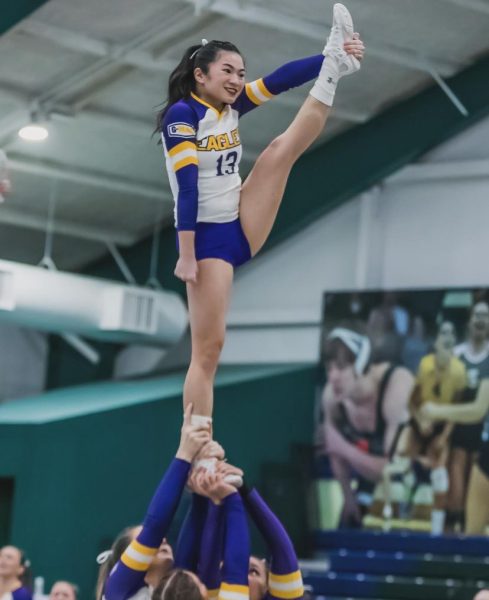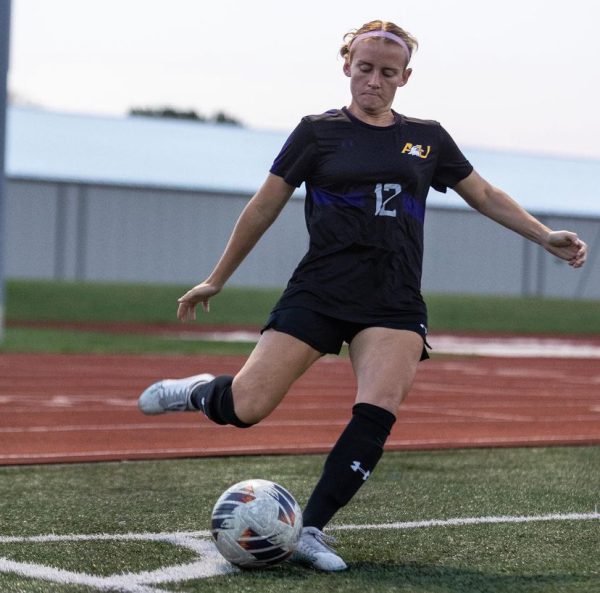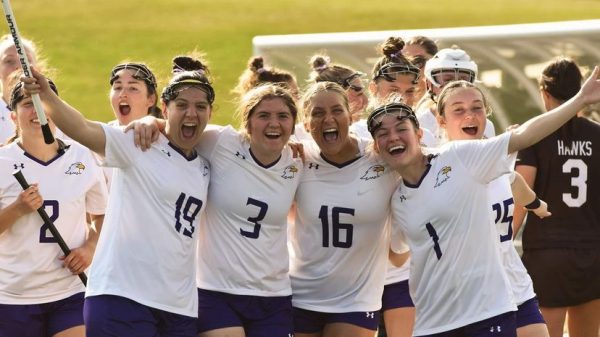AU volleyball looks to make late season run
October 31, 2013
The GLIAC volleyball season is fast-paced, hectic, and full of ups and downs.
With 18 conference match ups crammed into a short two-month period, each team hasn’t had much time to catch breath in between games. Many times, teams on road trips in the GLIAC play the next day in a different town to complete weekend back-to-back games.
Even through a roller coaster ride of a season, Ashland University’s volleyball team has propelled itself to the top of the GLIAC South Division and put themselves in prime position for a top conference playoff position.
Despite relying on several inexperienced underclassmen to produce a great portion of the team’s offensive attack, AU (16-6, 8-3) hasn’t had any major slipups and has instead thrived this season.
The Eagles have been led offensively by a trio of underclassmen who have complied a total of five GLIAC South Player of the Week honors. Freshmen outside hitters Alli Cudworth and Casey Clark and sophomore setter Shelly DeHenning have been the catalysts to an AU offense that is ranked second in the conference in total points and third in team kills per set.
Cudworth leads AU in kills (276) and kills per set (3.54). Both of those marks are good for fourth in the GLIAC. Clark isn’t too far behind in terms of production, with 212 kills and 2.79 kills per set from the opposite side of the court as Cudworth.
DeHenning has been exceptional at setting up Cudworth, Clark, and all of the other Eagles this season. Her 10.99 assists per set is tops in the GLIAC.
While these three players and the rest of the Eagles have won close games so far this season, there have been times when the Eagles have stumbled because of some inexperience. Ashland has the fourth most attacking errors in conference play, which has given other teams opportunities to come back in some matches. The other three teams that have more attacking errors than AU – Lake Superior State, Tiffin, and Michigan Tech – are all on the outside looking in of the eight-team GLIAC playoff field. The next playoff team to appear on the list is Saginaw Valley, who has the 7th most attacking errors in conference play.
AU will have five straight road matches to finish the season and while the Eagles may look to be the stronger team on paper for them, any chances that they would give to these teams by committing attacking errors, especially on the road, could decide the difference between winning and losing a match.
For teams in a conference as competitive as the GLIAC, winning or losing back-to-back matches can shift momentum and make or break a team’s season. Because of the emphasis placed on each match, it says a lot about a team’s resiliency to bounce back after a tough loss in a matter of a day or two.
So far, Ashland has lost two matches in a row just once this year and they haven’t lost two matches on the same weekend at any time this season.
This ability to bounce back is great to have in the regular season. The main question is how will this team play with the spotlight fixed on them in a “win or go home” game in the GLIAC playoffs. If this team wants to make a return trip to the NCAA Division II playoffs, it will have to finish its road-heavy on a winning note and then prove that they belong at the top of the pack in GLIAC playoffs with victories against tougher GLIAC North Division opponents.
There is a lot of potential for this Ashland team to make a name for itself late in the season. To fulfill that potential, there is one simple thing that they have to do that is a lot easier said then done in a conference like the GLIAC.
Win.










